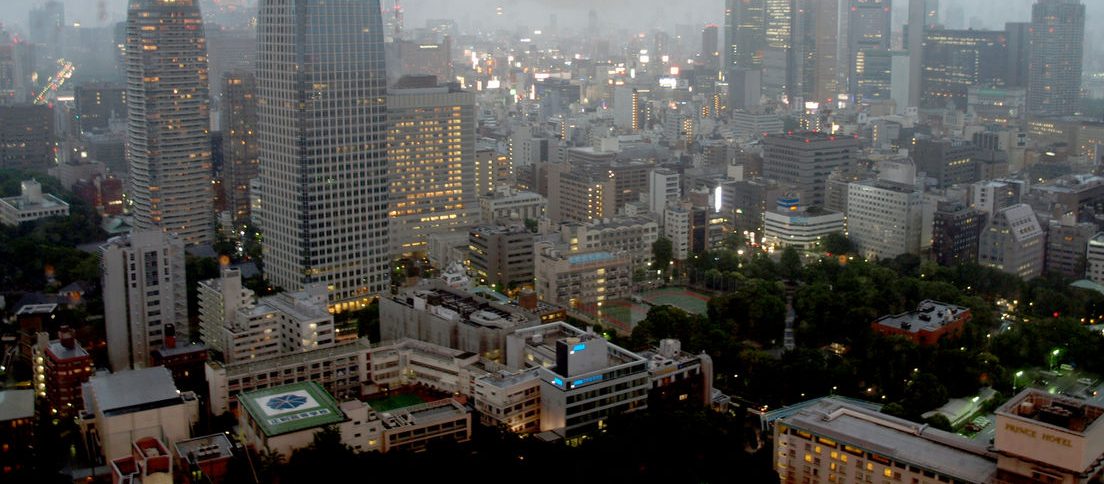While I was in grad school, I pushed really hard to have an excuse to travel the world and see what was out there that wasn’t NY. I especially wanted to experience traveling and living in Japan. It was a country where it was constantly at odds with itself aesthetically, culturally, and artistically. It is simultaneously the most tranquil, simple, and peaceful place to exist, while also being the most chaotic, over stimulating, and manic environments I have been in. It was a dichotomy of attitude and views, past and future, all existing in one frame at a time. After trying for two years I got to go there, I got to teach functional sculpture and study with carpenters in Kyoto. It changed my very being, and set off a relationship with the country for five years.
In 2008 I landed in Osaka, made my way by train to Kyoto, and moved into a traditional Japanese home that hosted artists in residence at the Kyoto Crafts School. I had arrived. It was all that I had imagined, it was both busy and sleepy, I was jet lagged and still couldn’t get rest because of how stimulating everything was. You are immediately bombarded with media as soon as you land. Ads, videos, signage, etc.. It was all so much, it was almost too much. The covered market in central Kyoto was a bustling empire of ridiculousness and wonderment. I didn’t get to have much time to myself, I was almost immediately introduced to my fellow residents, and we had teaching duties at the school almost as soon as we shook hands and bowed. I had two sections of summer courses to teach, both in something I had been pushing to create in my own work, functional sculpture. Really functional sculpture is just artistic objects that perform some task other than just aesthetic value. It would be a light, a chair, table, vessel, etc.. I was immensely excited to see what my students came up with.
Tokyo is a madhouse. Everything Kyoto was for me, was multiplied in Tokyo for ridiculousness.
I, on the other hand, was needing to wake up super early and study with a group of Japanese carpenters that worked mostly in Higashiyama. Japanese joinery and carpentry is something truly special. They work with no hardware, no fixatives, it is purely the wood connecting to itself in ways that create a locking bond. The joints can be simple or extremely ornate. It is a true art form in and of itself, and I wish I could say I became really good at it, but this western girl only ever became a beginner at it. So I would get up at 4am, take the train and a bus up to the temple complex of Higashiyama, meet my instructors, and then start rough cutting replacement parts for a 13th century pagoda. Like holy shit what?!? The guys that let me shadow and apprentice were so friendly and open to me joining them, it became almost my only social group outside of my own teaching, but essentially they were all family men and aside from the few trips to the izakaya I met them at, they weren’t super available. So I walked. I walked everywhere, took pictures of everything, I tried to capture this new feeling of existing in parallel worlds only separated by neon and flash. I tried because I wanted to emulate it, I wanted to make others feel this.
I wasn’t alone in Japan for long. In my second section of teaching, I met Kiyomi. She was a student in my course, though older than myself, and we immediately hit it off. She was extra special as a person, she felt everything intimately, and she had a wonderful eye for form and simplicity in her work. We would talk for hours about punk, queerness, games, art, and NY. She attended Parsons and was only in Japan for the summer, and I was completely lost in her. More than any of this, she understood what I was amazed by, and we explored this idea as much as we could. This eventually led me to visit her and her family in Funabashi, and finally get to see Tokyo.
Tokyo is a madhouse. Everything Kyoto was for me, was multiplied in Tokyo for ridiculousness. It just never stopped, it went on forever. Walking at night was like walking in mid afternoon, it was so bright in the busy areas of Akihabara and Shibuya. Color existed everywhere in every shade possible. It was the most modern city I had ever experienced. I took pictures of simple things like capsule stores, and sleepy streets, shrines and festivals. I was in a place that I felt so happy and excited over. It was what NY was for me as a kid, but so much better. My artwork began to change a lot during that time, simply because of Tokyo. We would travel back to Funabashi once a year for the next five years of my relationship with Kiyomi. Each time we would stay for a month or more. My work is very simple, very mournful. It emulated these quiet spaces I had found in Japan. I mainly used natural materials, unfinished and raw surfaces. It was built to contrast the light I used in the pieces. Japan taught me something very important, material language.
My design sensibility and artistic tendencies were completely tied into those five years with her, and with Japan.
Material language is where everything you show and build with, the raw materials, the tools, and the media used, speaks a very deliberate intention to the viewer. Raw and unfinished wood for me was nature, it was imperfect in its perfection, and tactile in its quietness. I used it extensively to calm the viewer and express a sense of peacefulness and tranquility. The hemp cord became binding and imprisonment. It was tied in ways expressing being weighed down and in servitude. My other most used material language was fragility and light. Our senses of self can be immensely fragile, and those lights within ourselves, so very delicate. I used a lot of glass and light to try and communicate this to the viewers. When you add in my usage of flora, you get a message of mournful peace. My sculpture was the quiet space of the Tokyo shrines, nestled into the mega city around it. It was the wall of hopeful fortunes tied to the bush at the end of the busy temple market. It was everything I explored and felt with Kiyomi in Japan.
Kiyomi passed in 2012, I was rudderless for a long time, but one thing that had changed almost completely inside me was from her. My design sensibility and artistic tendencies were completely tied into those five years with her, and with Japan. In much the way I described in my physical work. My designs have been shaped the same. I put a lot of focus on texture and feeling in my designs. Like is this app doing the task it needs to efficiently? Yes, awesome, but what does it communicate and make you feel. Do you feel demure or bored, or are you lit up from it, feeling fun and playfulness in an experience that you otherwise wouldn’t. The great thing about UI and product design, is that you can take the most mundane experience and turn it into something so much more. Why wouldn’t you want to smile while using a banking app, or feel rested after a simple and efficient experience purchasing metro tickets. Why are we stuck in this mentality that our digital experiences need to feel the same as they did in the physical world? Why are we so stuck on tradition and fidelity to what is essentially anxiety and unhappiness? Use that bright colour, that pastel palette, that gamelike flow. Make a 404 page that truly makes you feel lost and alone. Pair the ADD mania that is in our media consumption with the tired and simple. We don’t know something is dark without the light, we don’t know when something is bright without its shadows, and we don’t know how to feel about something until a designer tells us. I just want to make it better, we deserve better.









